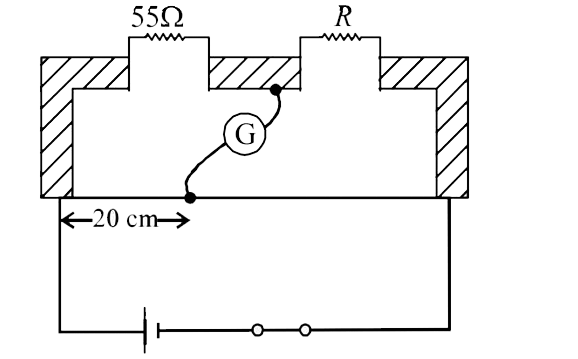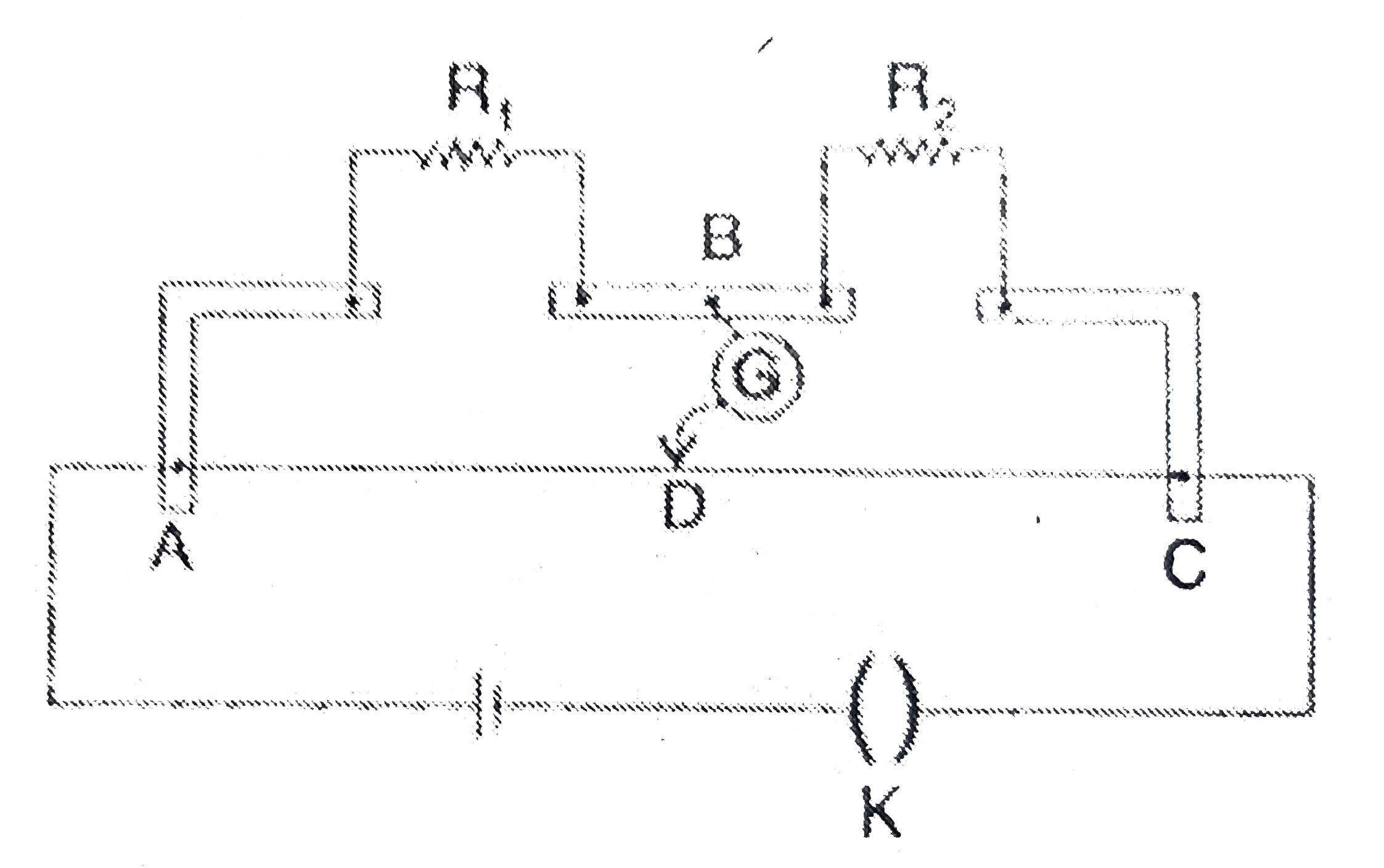In a meter bridge set up, which of the following should be the properties of the one meter long wire?
High resistivity and low temperature coefficient
Low resistance and low temperature coefficient
Low resistivity and high temperature coefficient
High resistivity and high temperature coefficient
The correct Answer is:A, C
To determine the properties of the one-meter long wire in a meter bridge setup, we can follow these steps:
1. Understanding the Meter Bridge Setup:
- A meter bridge is a device used to measure the resistance of an unknown resistor by balancing it with known resistors. The bridge consists of a one-meter long wire and a galvanometer.
2. Properties of the Wire:
- The wire must maintain its properties under varying conditions, such as temperature changes. This is crucial for accurate measurements.
3. Temperature Coefficient:
- The temperature coefficient (α) of the wire should be low. This means that the resistance of the wire should not change significantly with temperature variations. A low temperature coefficient ensures that the length of the wire remains constant, which is essential for the meter bridge to function correctly.
4. Resistivity of the Wire:
- The resistivity (ρ) of the wire should be high. High resistivity allows for greater sensitivity in the meter bridge. According to the formula for resistance R=ρLA, if the resistivity is high, the resistance will also be high, which leads to a more significant deflection of the galvanometer for small changes in the jockey position.
5. Conclusion:
- Therefore, the ideal properties of the one-meter long wire in a meter bridge setup should be:
- High resistivity: This enhances the sensitivity of the meter bridge.
- Low temperature coefficient: This ensures that the resistance does not change with temperature variations.
Final Answer:
The correct properties of the one-meter long wire in a meter bridge setup are:
- High resistivity
- Low temperature coefficient
---
- A meter bridge is a device used to measure the resistance of an unknown resistor by balancing it with known resistors. The bridge consists of a one-meter long wire and a galvanometer.
- The wire must maintain its properties under varying conditions, such as temperature changes. This is crucial for accurate measurements.
- The temperature coefficient (α) of the wire should be low. This means that the resistance of the wire should not change significantly with temperature variations. A low temperature coefficient ensures that the length of the wire remains constant, which is essential for the meter bridge to function correctly.
- The resistivity (ρ) of the wire should be high. High resistivity allows for greater sensitivity in the meter bridge. According to the formula for resistance R=ρLA, if the resistivity is high, the resistance will also be high, which leads to a more significant deflection of the galvanometer for small changes in the jockey position.
- Therefore, the ideal properties of the one-meter long wire in a meter bridge setup should be:
- High resistivity: This enhances the sensitivity of the meter bridge.
- Low temperature coefficient: This ensures that the resistance does not change with temperature variations.
The correct properties of the one-meter long wire in a meter bridge setup are:
- High resistivity
- Low temperature coefficient
Topper's Solved these Questions
Similar Questions
Knowledge Check
Which of the following is correct set of physical properties of the geometrical isomers ?
 ADipoleBoiling pointMelting pointstabilityI>III>IIII>II>IIBDipoleBoiling pointMelting pointstabilityII>III>III>III>ICDipoleBoiling pointMelting pointstabilityI>III>III>III>IIDDipoleBoiling pointMelting pointstabilityII>III>II>III>II
ADipoleBoiling pointMelting pointstabilityI>III>IIII>II>IIBDipoleBoiling pointMelting pointstabilityII>III>III>III>ICDipoleBoiling pointMelting pointstabilityI>III>III>III>IIDDipoleBoiling pointMelting pointstabilityII>III>II>III>IIIn thermodynamics, which one of the following properties is not an intensive property?
APresssureBTemperatureCVolumeDDensity
Which one of the following properties is not shown by NO ? .
View SolutionShown in the figure below is a meter- bridge set up will null deflection in the galvanometer.

The value of the unknown resistor R is
View SolutionIn the meter bridge experimental set up, shown in the figure, the null point 'D' is obtained at a distance of 40 cm from end A of the meter bridge wire. If a resistance of 10Ω is connected in series with R1, null point is obtained at AD=60cm. Calculate the values of R1andR2.

View SolutionWhich one of the following electrical meter has the smallest resistance ?
View SolutionA meter bridge setup is shown in the figure. If there is null deflection in galvanometer when length AC = 20 cm, then the value of resistance R is

View SolutionState the function of each of the following in a house circuiting:
kWh meter
View Solution
